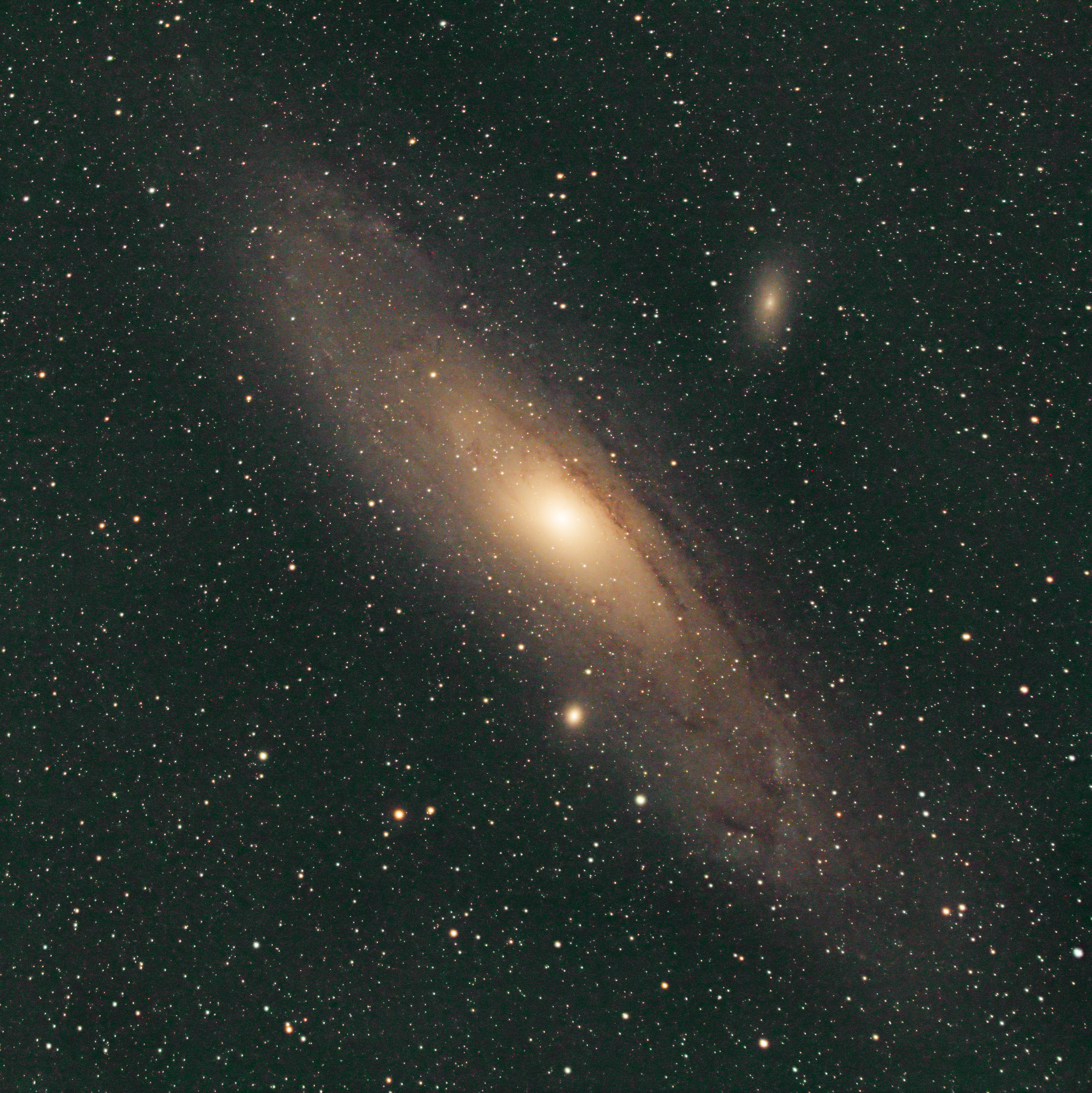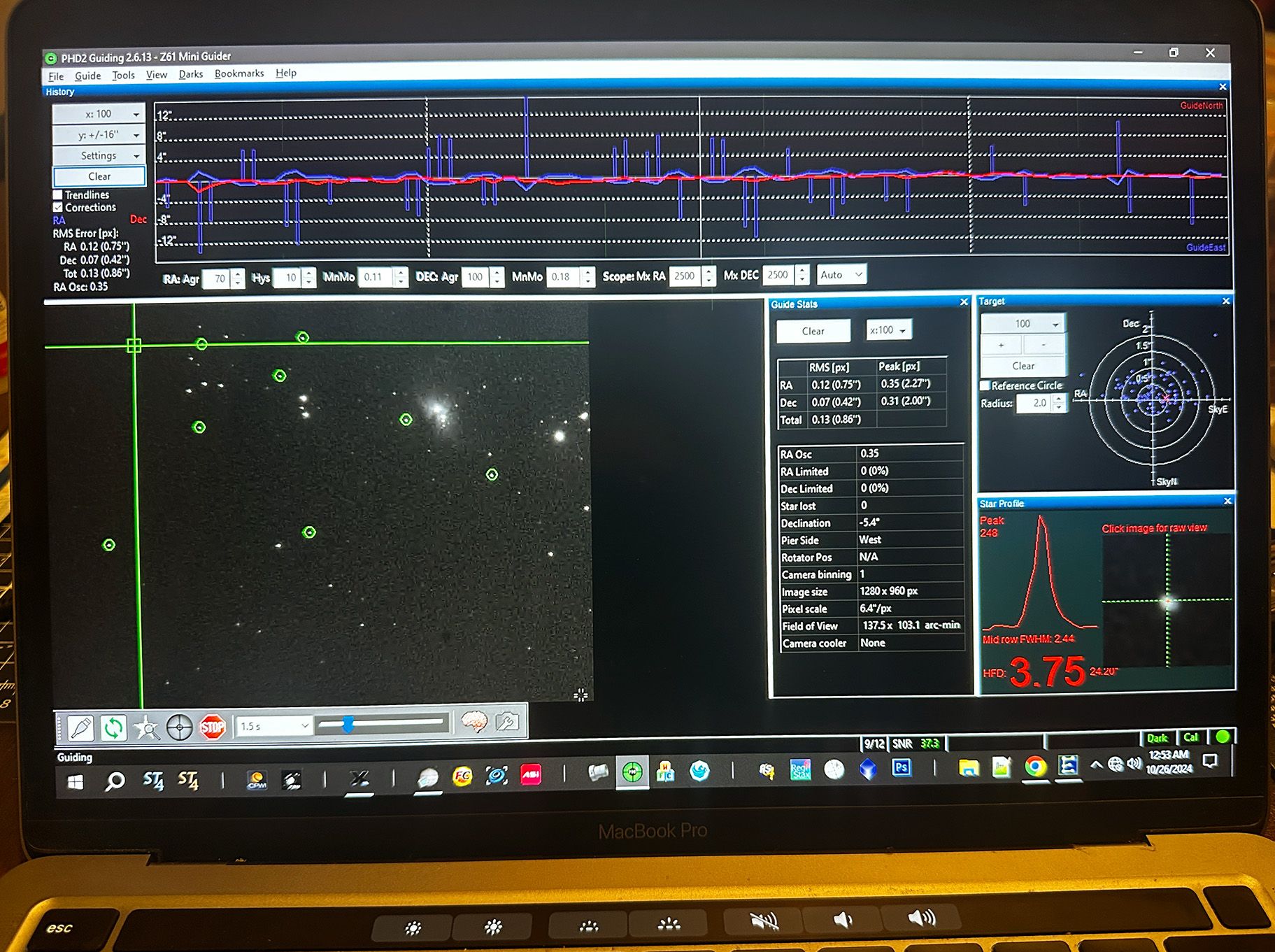Well I said I would never do it. For the longest time I was happy with my short little EAA exposures and I still am very passionate about observing via EAA but I wanted to see what all the hubbub was about with guiding. Now I know that you can absolutely guide when doing EAA sessions but I never really saw a need for it since I am just observing, and then saving an image of my session for documentation. Sure I may spend some time after trying to make the image prettier and post it on my Facebook or this website but I never really saw a need for guiding and a egg shaped star at the edge of my FOV here and there neer really bothered me too much.
I don't find it very enjoyable setting up a camera, letting it go for a few hours/night and then spending your time processing it instead of actually enjoying the night sky while you get some live stacks coming in and then moving on to the next object. I think they are two separate worlds. That being said, I have had a guide camera and scope stored away in the garage in-case I ever wanted to delve into the longer than 30 second exposure realm and this month I decided to give it a try.
The thought of making my process more complicated worried me. I really like my get up and go workflow and have heard horror stories of people trying to get their guiding to work or spending most of their evening starring at the graph and OCD'ing over its peaks and valleys.
To my surprise, I was very wrong about guiding. I dont know if I'm one of the lucky ones but I found it a total breeze to setup, and following some of the advice given in the documentation for PhD2 primarily "Set it and forget it", and just let the software do it's thing with it's wizards and what not, I was pretty much up and running within 30 minutes of figuring out what the hell I was doing.
So I have been doing some experiments the last few weeks with PhD2, to find out if it's worth the hassle, and pretty much after my first try I think it is considering how easy it is to setup and go.
Here are a couple of examples. The first is M31, 16 second exposures for about 3 hours, and the second one is 2 Minute exposures for about 20 minutes. Without guiding I would never have been able to go past 30 - 60 seconds with my setup without seeing some star trailing, but in the second image you can plainly see that my stars are as round as my setup can give and the 120 second exposure is almost comparable to the 3 hours of 16 seconds of the first image.

M31 - 3 hours of 16 second exposures

M31 - 10 Minutes of 120 second exposures
But of course I had to try the Orion Nebula and see what I could get in 10 minutes with a 2 minute exposure.

M42 - 5 minutes of 2 minute exposures
I even decided to see what I could come up with if I combine multiple days of data like the big boys do. That wasn't that amazing. The moon was a-blazing on both nights and I was still trying to grasp the concepts of long exposures ... oh and did I mention I was also trying to learn N.I.N.A.? That will be a story for another day.

M31 - Multiple 6 hours of 120s
Anyway, I had a lot of fun learning to guide and feel stupid I waited so long to do so. But, that being said, I still enjoy watching my short EAA exposure coming in over setting up the scope and waiting the next day to see what I got (or didn't get). Still, it's a nice skill to add to the bag, and N.I.N.A. opens up a whole new world of possibilities which I will be documenting here in the future.
I even purchased an Off Access Guider for my SCT which I haven't tested yet, but as soon as I have something to say about it, I will post a little something on it here.
Until then, here is some guiding porn for you weirdos out there. I know you're out there, I've seen you on the forums, you guys are weird :)
